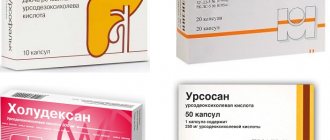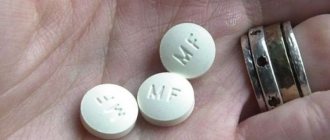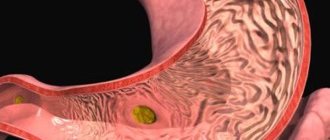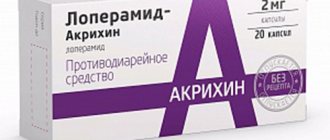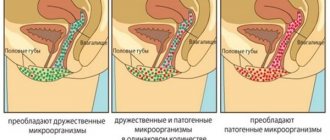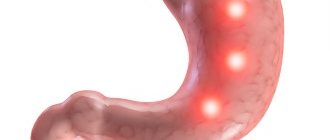Release form and composition
The drug is available in the following forms:
- soft gelatin capsules Sandimmun Neoral 10 mg: oval, yellowish-white, with red markings in the form of the manufacturer’s logo (S in a triangle) and the code “10 mg” (10 pieces in a blister, six blisters in a cardboard pack);
- soft gelatin capsules Sandimmune Neoral 25 mg: oval, gray-blue, with red markings in the form of the manufacturer’s logo (S in a triangle) and the code “25 mg” (5 pieces in a blister, ten blisters in a cardboard pack);
- soft gelatin capsules Sandimmun Neoral 50 mg: oblong, yellowish-white, with red markings in the form of the manufacturer’s logo (S in a triangle) and the code “50 mg” (5 pieces in a blister, ten blisters in a cardboard pack);
- soft gelatin capsules Sandimmune Neoral 100 mg: oblong, gray-blue, with red markings in the form of the manufacturer’s logo (S in a triangle) and the code “100 mg” (5 pieces in a blister, ten blisters in a cardboard pack);
- oral solution Sandimmun Neoral: transparent, from brownish-yellow to light brownish-yellow or from yellow to light yellow, with a specific odor of ethanol and oil (50 ml in dark glass bottles, one bottle in a cardboard box complete with a dosage kit (measuring syringe and tube for collecting the solution)).
Each pack also contains instructions for use of Sandimmune Neoral.
Composition of 1 capsule:
- active ingredient: cyclosporine – 10 mg, 25 mg, 50 mg or 100 mg;
- auxiliary components: propylene glycol, polyoxyl 40 hydrogenated castor oil, D,L-α-tocopherol, mono-, di- and triglycerides of corn oil, ethanol;
- capsule shell: glycerol 85%, gelatin, titanium dioxide, propylene glycol, black iron oxide.
Composition of 1 ml solution:
- active ingredient: cyclosporine – 100 mg;
- auxiliary components: propylene glycol, polyoxyl 40 hydrogenated castor oil, D,L-α-tocopherol, mono-, di- and triglycerides of corn oil, absolute ethanol.
Similar drugs
Imusporin, made in India;- Lifemoon, produced jointly by India/UK;
- Panimune Bioral, manufacturer India;
- Cyclosporine Alkaloid, produced in Macedonia;
- Restasis, USA;
- Ekoral, Israel;
- Cycloprene;
- Orgasporin;
- Plaquenil;
- Imuran;
- Cuprenil;
- Ekvoral, Czech Republic.
Pharmacological properties
Pharmacodynamics
Sandimmune Neoral is an immunosuppressive drug.
The active substance – cyclosporine – is a cyclic polypeptide consisting of 11 amino acids. It is a selective immunosuppressant that inhibits calcineurin activation of lymphocytes in the G0 or G1 phases of the cell cycle. This prevents the activation of T lymphocytes. In addition, antigen-dependent release of lymphokines, including interleukin-2 (a T-lymphocyte growth factor), is also prevented at the cellular level. Cyclosporine has a reversible and specific effect on lymphocytes. What distinguishes cyclosporine from cytostatics is that it does not affect the function of phagocytes and does not suppress hematopoiesis.
Cyclosporine helps to increase the lifespan of allogeneic transplants of lungs, pancreas, skin, kidneys, heart, small intestine, and bone marrow. The substance also suppresses the development of cellular reactions in relation to the allograft, experimental allergic encephalomyelitis, delayed-type skin hypersensitivity reactions, arthritis caused by Freund's adjuvant, GvHD (graft-versus-host disease) and the formation of antibodies dependent on T-lymphocytes. Cyclosporine is effective in human solid organ and bone marrow transplantation when used to prevent and treat rejection and GvHD, and in conditions that are or may be considered autoimmune in nature.
The dosage forms of Sandimmune Neoral (oral solution and soft capsules, which also contain the solution) have the following feature. The solution is a microemulsion preconcentrate that forms a microemulsion in the presence of a liquid (the liquid with which the oral solution is mixed before use, or in the presence of liquids in the stomach when taking the drug in capsule form). This reduces the variability of pharmacokinetic parameters. Also, this feature provides a linear relationship between the dose of the drug and the effect of cyclosporine with a more uniform absorption profile and less dependence on simultaneous food intake. A study of the microemulsion preconcentrate showed that the correlation between the basal concentration of the substance and its effect when using Sandimmune Neoral is more pronounced than when using Sandimmune.
Pharmacokinetics
When taking Sandimmune Neoral, there is a clearer linear relationship between the dose and effect of cyclosporine (AUCB), a more constant absorption profile and less dependence on the circadian rhythm and simultaneous food intake, which is characteristic of Sandimmune. Taken together, these properties determine the low variability in the pharmacokinetic parameters of cyclosporine in the same patient and a more pronounced correlation between basal concentration and bioavailability (AUCB). Due to these additional benefits, there is no need to take meal timing into account in the dosing regimen. Also, the use of Sandimmune Neoral provides a more uniform effect of cyclosporine both during the day and throughout the course of maintenance treatment.
The oral solution and soft gelatin capsules are bioequivalent.
The absolute bioavailability of cyclosporine varies among different patient populations.
Tmax (time to reach maximum concentration of a substance) ranges from 1.5 to 2 hours. Absorption of the substance occurs quickly; in comparison with Sandimmune, the average value of Cmax (maximum concentration of the substance) in plasma and bioavailability are 59 and 29% higher, respectively.
The distribution of cyclosporine occurs predominantly outside the bloodstream. In the blood, from 33 to 47% of the substance is in plasma, in lymphocytes - 4-9%, in granulocytes - 5-12%, in erythrocytes - 41-58%. Binding to plasma proteins (mainly lipoproteins) is approximately 90%.
The substance is largely subject to biological transformation by the CYP3A4 isoenzyme, and is metabolized to a lesser extent in the gastrointestinal tract and kidneys, with the formation of approximately 15 metabolites. There is no one main metabolic pathway.
Cyclosporine is excreted mainly through bile. About 6% of the dose is excreted in the urine (of which 0.1% is unchanged).
The values of the final T1/2 (half-life) of cyclosporine have significant variability. With unchanged liver function, the final T1/2 value is approximately 6.3 hours, in the presence of severe liver disease - about 20.4 hours.
Indications for use
- prevention of graft rejection after bone marrow transplantation, prevention and treatment of graft-versus-host disease;
- prevention of rejection of heart, pancreas, liver, lung, kidney allografts, as well as combined cardiopulmonary transplant; prevention of transplant rejection in patients who have previously received other immunosuppressants;
- steroid-resistant and steroid-dependent nephrotic syndrome in children and adults, caused by glomerular pathology (segmental and focal glomerulosclerosis, minimal change nephropathy, membranous glomerulonephritis);
- active sight-threatening posterior or middle uveitis of non-infectious origin in the absence of effect from traditional treatment or with the development of severe side effects; Behcet's uveitis with repeated attacks of inflammation involving the retina;
- treatment of severe forms of psoriasis when traditional therapy is ineffective or impossible;
- treatment of severe active rheumatoid arthritis;
- treatment of severe forms of atopic dermatitis if systemic therapy is necessary.
Patient reviews
I used Neoral to get rid of psoriasis. After several days, the first signs of positive dynamics began to appear. Now I am practically cured of this illness. Thanks to the manufacturers of the medicine and the doctors who prescribed it to me.
Igor Selivanov
I have chronic rheumatoid arthritis. To get rid of severe pain, I was advised to use Neoral. I listened to the recommendations and did not regret it. The symptoms of the disease became less pronounced, and no side effects occurred.
Alexandra Rostova
Doctors diagnosed me with atopic dermatitis and prescribed treatment with Neoral.
I followed all their instructions exactly and achieved positive dynamics. Gradually the disease began to recede. To consolidate the results, I plan to take a repeat course. Alexey Parfenov
Contraindications
Sandimmune Neoral is contraindicated in case of hypersensitivity to the main or auxiliary components of the drug.
For indications that are not related to transplantation, there are additional contraindications:
- uncontrolled arterial hypertension;
- infectious diseases that cannot be adequately treated;
- malignant tumors;
- impaired renal function (with the exception of nephrotic syndrome with an acceptable degree of such disorders).
Sandimmune Neoral is prescribed with caution to elderly patients.
Sandimmun Neoral should be used with caution during pregnancy; therapy is contraindicated during breastfeeding.
Sandimmun Neoral, instructions for use: method and dosage
Sandimmune Neoral capsules and solution are intended for oral use before, during or after meals. The daily dose is divided into 2 doses.
When switching to Sandimmune Neoral from the drug Sandimmune, the following rules must be observed:
- after transplantation, treatment begins with the same daily dose as with the previous use of the drug Sandimmune. During the first 4–7 days, the basal concentration of cyclosporine in the blood should be monitored. Blood pressure and serum creatinine should also be monitored for 2 months after transition. In case of deviations from the norm, the dose of cyclosporine is adjusted;
- when treating for indications not related to transplantation, therapy is also started with the daily dose that was used during previous treatment with Sandimmune. Blood pressure and cyclosporine concentrations are monitored 2, 4 and 8 weeks after switching to Sandimmun Neoral.
Recommended doses and duration of treatment for transplant-related indications:
- Bone marrow transplantation: in the first 2 weeks after bone marrow transplantation, intravenous administration of the drug Sandimmune is used (according to the instructions). Then the patient is transferred to Sandimmune Neoral and prescribed a maintenance dose of about 12.5 mg/kg per day in two doses. Reception is continued for at least 3, and preferably 6 months. Then, over the course of a year after transplantation, the dose is gradually reduced until completely discontinued. When prescribing the oral form of the drug at the initial stage of treatment, the recommended dose is 12.5–15 mg/kg per day in two divided doses (start the day before transplantation);
- solid organ transplantation: 10–15 mg/kg body weight per day in two doses. Treatment begins 12 hours before surgery. Subsequently, the drug is taken at the same dose for 1–2 weeks after transplantation, then the dose is gradually reduced to a maintenance dose of 2–6 mg/kg per day in two doses. If Sandimmun Neoral is prescribed as part of a combination three- or four-component therapy, already at the initial stage of treatment it is possible to reduce its dose to 3-6 mg/kg per day in two doses.
For diseases of the gastrointestinal tract that lead to decreased absorption, higher doses of Sandimmune Neoral are sometimes required, and in some cases intravenous administration of cyclosporine.
With the development of GvHD (graft-versus-host disease), Sandimmune Neoral is used in low doses.
Recommended doses and duration of treatment for non-transplant indications:
- endogenous uveitis (to induce remission): 5 mg/kg per day in two doses until signs of inflammation disappear and vision improves. In severe cases, it is possible to increase the dose to 7 mg/kg per day for a short time. During maintenance treatment, the dose is gradually reduced to the lowest effective dose, which is no more than 5 mg/kg per day during the period of remission;
- nephrotic syndrome (for induction of remission): 5 mg/kg per day for adult patients and 6 mg/kg per day for children (in two doses). For impaired renal function, the initial dose of cyclosporine is no more than 2.5 mg/kg per day. Subsequently, the dose is reduced to a maintenance dose, which is the minimum effective dose;
- rheumatoid arthritis: 3 mg/kg per day in two divided doses for the first six weeks. If the effectiveness is insufficient, a gradual increase in the dose is possible, but not more than 5 mg/kg per day. Duration of use at the initial dose is up to 12 weeks. The maintenance dose is selected individually and depends on the tolerability of Sandimmune Neoral;
- psoriasis: to induce remission, cyclosporine is prescribed at an initial dose of 2.5 mg/kg per day in two divided doses. If after one month of therapy there is no improvement, a gradual increase in the dose is possible, but not more than 5 mg/kg per day. If there is no satisfactory response after 6 weeks of therapy at a dose of 5 mg/kg, the drug should be discontinued. When a positive effect is achieved, Sandimmun Neoral is discontinued. A subsequent relapse is treated by re-administering the drug at the previous effective dose. Sometimes maintenance therapy is required, the dose for which is selected individually and is minimally effective (no more than 5 mg/kg per day);
- atopic dermatitis: 2.5–5 mg/kg per day in two doses. If a satisfactory response is not achieved within two weeks of treatment, the daily dose may be increased to a maximum of 5 mg/kg per day. In severe cases, the maximum daily dose is used at the beginning of therapy. When a positive response is achieved, the dose is gradually reduced, and if possible, Sandimmune Neoral is completely discontinued. In case of relapse of the disease, a repeat course is prescribed. Sometimes 8 weeks of treatment are enough to completely cleanse the skin, but long-term therapy (up to one year) is more effective.
Sandimmune and Transfer Factor
(very important note) The cost of Sandimmune is on average about 1,000 rubles. for 10 ampoules, a course of therapy followed by prophylaxis may require up to 200 ampoules, which is up to 20,000 rubles. and even more, and the result is not guaranteed. But given the serious side effects of this drug when taken in large quantities, we would not advise you to use it. Exactly the same functions are performed by Transfer Factor, which contains 90 capsules in a package and costs about 2,000 rubles. Only TF has no contraindications and does not cause any side effects; it is impossible to overdose and has no age restrictions. Among other things, its effect on our body is deeper and more dramatic - it puts in order damaged human DNA, i.e. removes the cause of the disease, rather than treating its consequences. But if you still decide to take Sandimmune, then we advise you to take it with TF in combination, because When taken in such a complex manner, TF neutralizes all its side effects and restores immune processes that are disrupted by Sandimmune, and this is one of the key links in our immunity. Here you will read about the use of TF for various diseases.
Side effects
Many side effects associated with the use of the drug Sandimmune Neoral are dose dependent and are reversible when the dose is reduced.
During treatment, undesirable effects from the following systems and organs are possible:
- digestive system: often - nausea or vomiting, diarrhea, anorexia, liver dysfunction, abdominal pain, gum hyperplasia; rarely - pancreatitis;
- metabolism: very often – hyperlipidemia; often – hypomagnesemia, hyperkalemia, hyperuricemia; rarely – hyperglycemia;
- cardiovascular system: very often - increased blood pressure;
- hematopoietic system: sometimes – thrombocytopenia, anemia; rarely – hemolytic uremic syndrome, microangiopathic hemolytic anemia;
- central and peripheral nervous system: very often – headache, tremor; often - paresthesia; sometimes - lethargy, slow reactions, sleep disturbance, cortical blindness, paresis, convulsions, disorientation, agitation, coma, visual disturbances; very rarely - papilledema;
- urinary system: very often - impaired renal function;
- endocrine system: rarely – gynecomastia, disruptions in the menstrual cycle;
- musculoskeletal system: often – myalgia, muscle spasms; rarely – myopathy, muscle weakness;
- dermatological reactions: often – excessive hair growth; sometimes - an allergic rash;
- other reactions: often - increased fatigue; sometimes - weight gain, swelling.
Overdose
Experience with overdose of Sandimmune Neoral is limited.
Possible symptoms: impaired renal function (probably reversible); when used in a dose of up to 10 g – slightly pronounced clinical manifestations in the form of vomiting, dizziness, headache, tachycardia; in some cases - reversible impairment of moderate renal function.
There is information about severe toxic complications from parenteral overdose in premature infants in the neonatal period.
Therapy: symptomatic; During the first two hours, you can induce vomiting or rinse the stomach.
During hemodialysis and hemoperfusion using activated carbon, the substance is practically not excreted. There is no specific antidote.
special instructions
Sandimmune Neoral should be used by specialists who have experience in immunosuppressive treatment and are able to provide adequate monitoring of the patient, including regular measurement of blood pressure and determination of serum creatinine concentration.
Taking cyclosporine and other immunosuppressants is associated with an increased risk of developing lymphomas and other malignant tumors, most often of the skin.
Patients receiving Sandimmune Neoral should avoid exposure to photochemotherapy, ultraviolet radiation and direct sunlight.
When using cyclosporine, the likelihood of various fungal, bacterial, viral and parasitic infections increases, often with the participation of opportunistic microorganisms. Therefore, during treatment (especially long-term combined treatment) with immunosuppressants, an effective system of preventive and therapeutic measures should be used.
The effectiveness of vaccination may be reduced; It is recommended to avoid administration of live attenuated vaccines.
Impact on the ability to drive vehicles and complex mechanisms
There are no data on the effect of Sandimmune Neoral on the ability to drive a car or perform other potentially hazardous work.
Cost and available analogues
Neoral is included in the register of medicines, so it can be bought or sold throughout Russia. The drug is released only with a doctor's prescription. The price for Sandimmun Neoral can reach up to 11 thousand rubles, and the solution will cost half as much.
Many pharmaceutical companies produce affordable substitutes for Sandimmune Neoral. Analogues have a similar composition, but differ in some characteristics. The most popular of them are:
- Lifemoon;
- Immunosporin;
- Cyclosporine;
- Equoral;
- Neori Yadikaya;
- Restasis.
You can replace Neoral with them only after consulting a doctor. Neoral is a high-quality and effective medicine that helps cope with various serious diseases, as well as reduce the risk of rejection of transplanted organs. With proper use and adherence to dosages, you can prevent any side effects and speed up the healing process.
Use during pregnancy and lactation
- pregnancy: Sandimmun Neoral can be used only in cases where the expected benefit from therapy outweighs the possible harm. Adequate studies have not been conducted, experience with use is limited. Pregnant women who have undergone an organ transplant and are receiving immunosuppressive treatment with cyclosporine or combination therapy that includes cyclosporine are at risk of preterm birth (before 37 weeks). Limited monitoring of children exposed to cyclosporine in utero has not revealed any abnormalities;
- lactation period: therapy is contraindicated because the substance passes into breast milk.
According to studies, Sandimmune Neoral has a toxic effect on reproductive function.
Drug interactions
The concentration of cyclosporine is reduced when used simultaneously with the following drugs: phenytoin, rifampicin, orlistat, barbiturates, octreotide, ticlopidine, terbinafine, carbamazepine, bosentan, nafcillin, sulfinpyrazone, probucol, sulfadimidine (intravenous administration) and St. John's wort preparations.
The concentration of cyclosporine increases when used simultaneously with drugs such as: fluconazole, nefazodone, ketoconazole, colchicine, macrolide antibiotics, imatinib, itraconazole, protease inhibitors, voriconazole, cholic acid and its derivatives, diltiazem, amiodarone, nicardipine, allopurinol, verapamil, high doses of methylprednisolone, danazol and oral contraceptives.
With caution, Sandimmune Neoral is used simultaneously with aminoglycosides, vancomycin, amphotericin B, diclofenac, sulindac, naproxen, ciprofloxacin, trimethoprim (+ sulfamethoxazole), histamine H2 receptor blockers, melphalan and methotrexate.
The question of the simultaneous use of Sandimmune Neoral with other drugs is decided by the doctor, since cyclosporine is highly active and enters into drug interactions with many drugs.
Pharmacological interaction
During treatment with Neoral, it is necessary to take into account its compatibility with other drugs. Some of them can reduce or increase the effectiveness of action, as well as develop complications.
The main combinations of drugs and their effects on the body:
- Carbamezapine, Nafcillin, Terbinafine and other similar drugs significantly reduce the concentration of cyclosporine (the active ingredient of Neoral).
- Ketoconazole, Nicardipine Danazol and others increase the effectiveness of the drug.
- In combination with drugs that have nephrotoxic properties, some complications may develop.
- The risk of nephrotoxicity increases if Neoral is taken simultaneously with Tacrolimus.
- The combination of cyclosporine and Nifedipine will lead to increased gingival hyperplasia.
- There is a risk of kidney dysfunction if Neoral is used together with Diclofenac.
- Cyclosporine increases the toxicity of Colchicine.
- In combination with potassium-sparing drugs, hyperkalemia may occur.
Terms and conditions of storage
Store at a temperature not exceeding 25 °C (soft gelatin capsules) or 30 °C (oral solution). When the temperature was randomly increased to 30 °C, the effectiveness of the capsules did not change. Keep away from children. Shelf life – 3 years.
An opened bottle of oral solution must be stored at a temperature of 15-30 °C and used within 2 months. When storing the solution at temperatures below 20 °C, the drug may transform into a jelly-like state. When the temperature rises to 30 °C, the solution becomes liquid again, but small flakes or sediment may appear, which does not affect the safety, effectiveness or accuracy of dosing of the drug.
Sandimmun: price and sale
Despite the fact that this drug is used quite rarely, it can be purchased at almost any pharmacy. You can also buy Sandimmune via the Internet. We would like to warn you not to buy the drug directly or through your friends. When purchasing, be sure to ask the seller for a product conformity certificate. The cost of the drug is almost the same everywhere and its price is somewhere around 1000 rubles. for 10 ampoules. Sandimmune, reviews of which are very controversial, should, as we have already said, be taken only under the supervision of an experienced doctor. Remember this!

